- Conservation
- Posted
Conservation + Sustainability

Leading Eco Architects Rachel Bevan and Professor Tom Woolley look at the connection between conservation and sustainability.
There are strong over-laps between the ‘conservation' of buildings and ‘sustainable' building. The importance of the latter has become key to best practice as well as public sector policy in construction. An example of this common ground is that by re-using buildings we benefit from the embodied energy of the original construction. Fresh material does not need to be quarried and transported and redundant material does not need to be ‘disposed of ‘.
Whilst buildings used to be flattened, they are now carefully dismantled supplying materials to the thriving businesses in the recycling market. People are willing to pay the same cost (or even more) for old materials as new, recognising their quality, especially in well-seasoned timber.
However, it would be wrong to assume that all conservation and renovation practices are environmentally responsible. Just as we need a new approach to the construction of new buildings in order to safeguard the environment, so we need a fresh greener approach to conservation.
Broader Policy Context
Government policies, generally led by EU Directives, are going to significantly change the construction industry, for example in terms of disposal of waste, toxicity of products, and energy in construction and use. Many of these policies will be beneficial to the conservation movement which to date, has been driven partially by planning policies and conservation interest groups such as UAHS.
Governments have agreed to reduce carbon emissions and reduce the use and wastage of fossil fuel and non-renewable resources. As the construction of buildings and energy use in buildings is the biggest contributor to carbon and other pollution in the atmosphere, tackling the built environment will be the most significant way to save energy. This will encourage the re-use of existing buildings instead of demolition and replacement with new buildings, but this should also be done in an energy and resource-efficient way.
Ecological ‘foot-printing' methods show us that the North and South of Ireland can only provide 1.5 acres per person to sustain life. However, we are currently using 4 acres per person. The building industry currently relies on importing materials from all over the world. When fossil fuel stocks run low in 10-12 years the cost of energy will become critical, finally forcing us to consider issues about local sourcing of materials, re-use and energy in use.

The Growing Interest and Concern
Many people are already concerned about these issues and want to be more environmentally responsible but can't get answers to their questions about their existing or new buildings. Here are some questions and typical answers:
How can I make my building more energy efficient ?
It isn't always easy to super insulate existing buildings, but that doesn't mean we shouldn't try. External insulation is a good idea as it enhances the thermal mass of the building, but may not be possible for aesthetic reasons. There are safe methods of dry lining without damp problems and experiments have shown that a form of hemp lime plaster applied to old walls provides some measure of insulation. Roof voids and floors should have more insulation than is required by current building regulations and this is easily achieved. Adequate ventilation becomes more critical as the insulated building envelope is tightened up.
What sort of environmentally friendly insulation can I use?
A range of low impact insulation and building materials are available which are non toxic, not based on fossil fuels nor laced with fire retardants. These include aerated lime blocks, recycled newsprint, sheep's-wool, wood fibre and hemp. Second hand insulation is also an option.
Is all wood from well managed forests like the timber merchants say?
Saying all timber is sustainable has become one of the big marketing lines (since associating the words ‘eco' and ‘friendly'). W hen renovating old buildings, try to save existing timber and re-use it for primary or secondary use. This involves time and space to sort and store. New timber should be locally grown or from forests certified by the Forest Stewardship Council. Some tropical hardwood is certified - look for the FSC logo.
What about damp and woodworm, don't we have to use toxic chemicals to treat the building?
There are now a wide range of methods and materials for dealing with dampness and infestation without the use of highly toxic chemicals. Dry rot fungus can be starved of food and killed naturally. Woodworm should only be treated if a problem. Boron based chemicals are much less toxic and are now more widely available. Many products have thankfully been withdrawn in the last 10 years but you should ask the timber specialist company to confirm what they are using. Remember to accommodate bats & bees etc as well as your own health implications.
Can we use recycled materials?
Often recycled materials are of much better quality than new. Building Control will not prevent their use unless there is a really serious problem. Old buildings were generally put together allowing them to be dismantled e.g. lime mortar rather than cement allows the bricks and stones to be re-used. Consider this when building anew, to ensure that materials are fixed so they can be recycled again. There is too much use of adhesives and finishing with sealants rather than careful jointing, whereas screw-fixing allows timbers to be re-used. If using a standard building contractor, source the re-cycled materials yourselves, and accept some initial reluctance regarding their use.

Is Lime better than cement?
Most old buildings used lime for mortars and plasters. Portland cement was broadly used since early 20 th century. It is a convenient and easily used product but its manufacture makes it one of the most environmentally damaging and polluting building materials. The use of cement and concrete in old and historic structures can, and has done, huge damage to the existing fabric due to incompatibility. Always use the appropriate building lime, and don't let the builder cheat by using cement when you aren't looking!
Can building materials damage our health?
An increasing range of building materials, fixtures and fittings contain a toxic cocktail of chemicals. We breathe these in, in our increasingly air tight buildings, especially in the early months after new work has been done. Small children are particularly at risk as they breathe in chemicals in higher concentrations in relation to their body weight. Often we have heard people say that they have freshly painted a room for the new baby coming home when they have used materials full of volatile organic compounds and solvents which “off gas” into the room for many months. Many of these chemicals have been linked with asthma. However old buildings are not free of toxins and great care has to be taken when stripping off old lead paint and even wallpapers soaked in arsenic.
Are natural paints and finishes readily available?
There are now many suppliers of green paints and many other products, mostly based in England , however interest in Ireland is also growing. The extra premium is often the postage charges.
Does greener building cost more?
All building work is expensive, but mistakes are the most expensive! Changing designs and specification to a greener approach may cost more, but if the right approach is adopted from the start then environmentally responsible building works will give you a worth-while pay back.
Related items
-
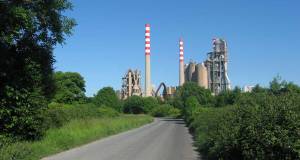 Most polluting cements ruled out in Irish public procurement
Most polluting cements ruled out in Irish public procurement -
 Up to 11
Up to 11 -
 It's a lovely house to live in now
It's a lovely house to live in now -
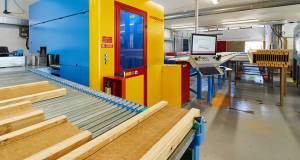 We Build Eco flat pack timber frame partnership gathers pace
We Build Eco flat pack timber frame partnership gathers pace -
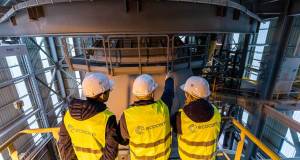 Ecocem announces cement breakthrough to cut CO2 by 70 per cent
Ecocem announces cement breakthrough to cut CO2 by 70 per cent -
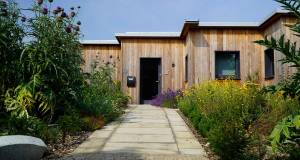 Mass timber masterwork
Mass timber masterwork -
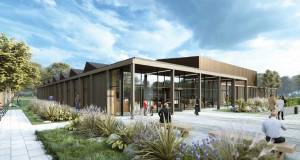 AECB conference to showcase timber innovation
AECB conference to showcase timber innovation -
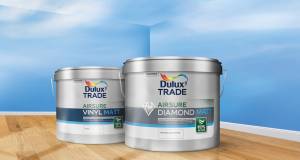 Dulux Decorator Centre launches carbon reduction plan
Dulux Decorator Centre launches carbon reduction plan -
 Kilsaran launch lower carbon cement with CarbonCure
Kilsaran launch lower carbon cement with CarbonCure -
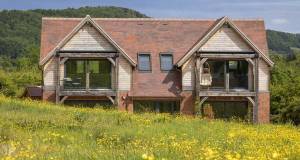 Heart of oak
Heart of oak -
 Welsh social housing to embrace passive house, timber & life cycle assessment
Welsh social housing to embrace passive house, timber & life cycle assessment -
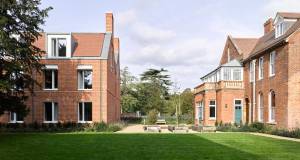 Cambridge chooses passive house comfort for Kings’ College students
Cambridge chooses passive house comfort for Kings’ College students

